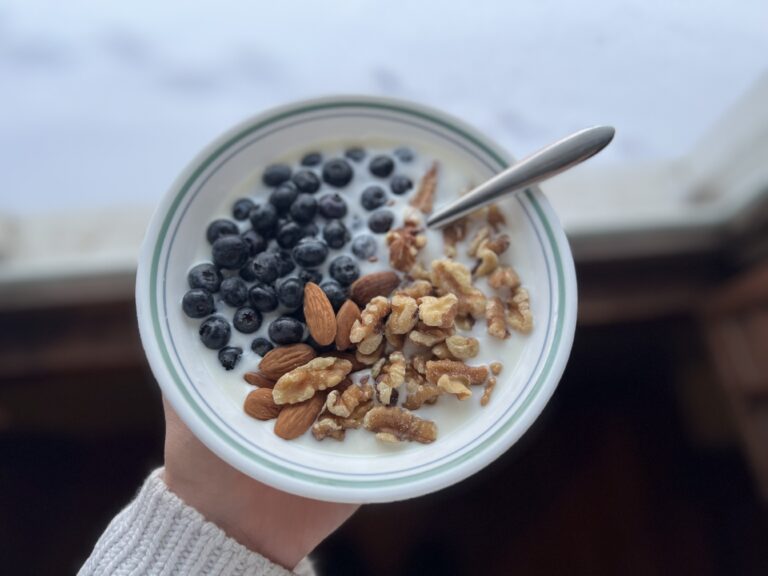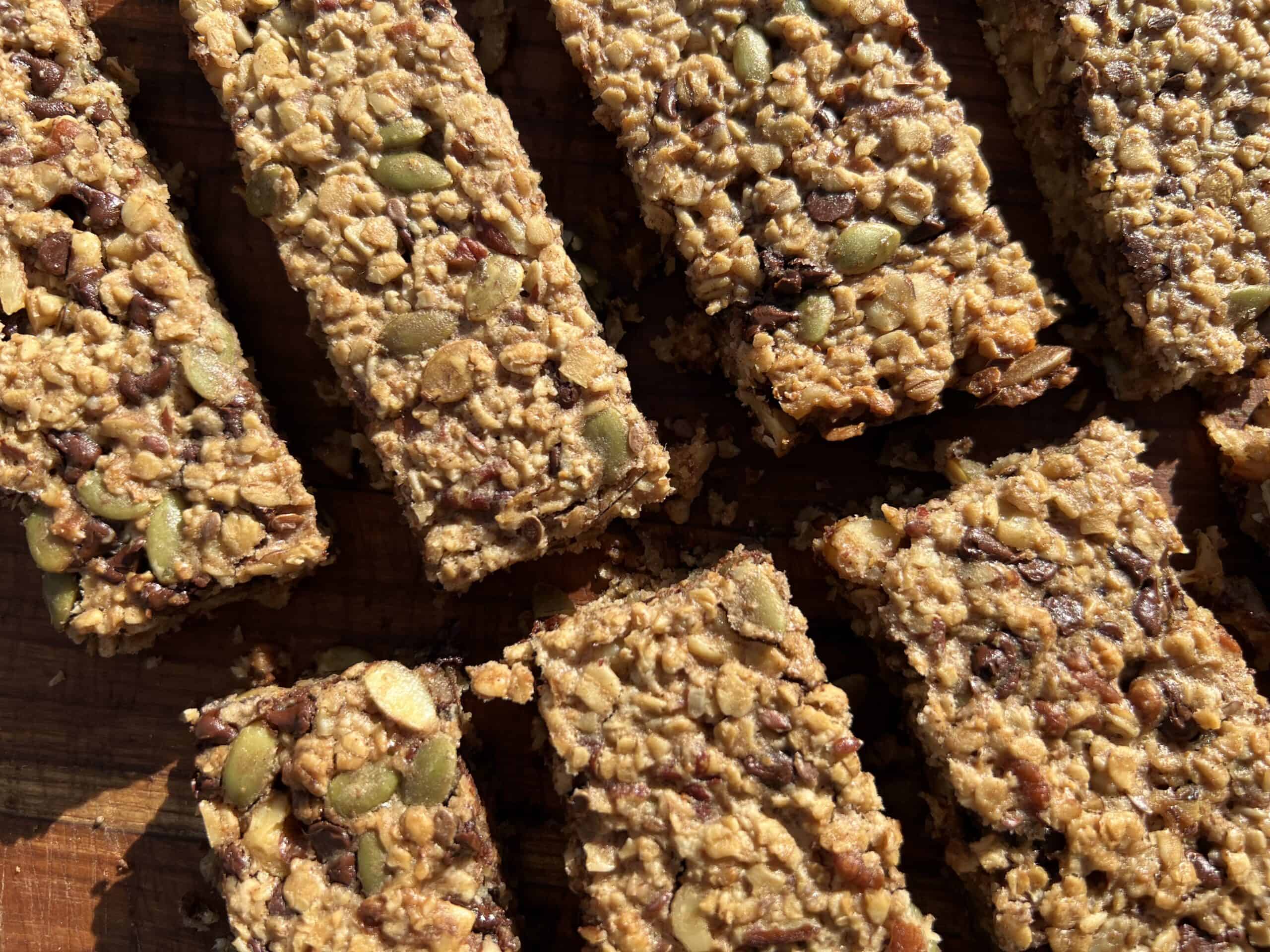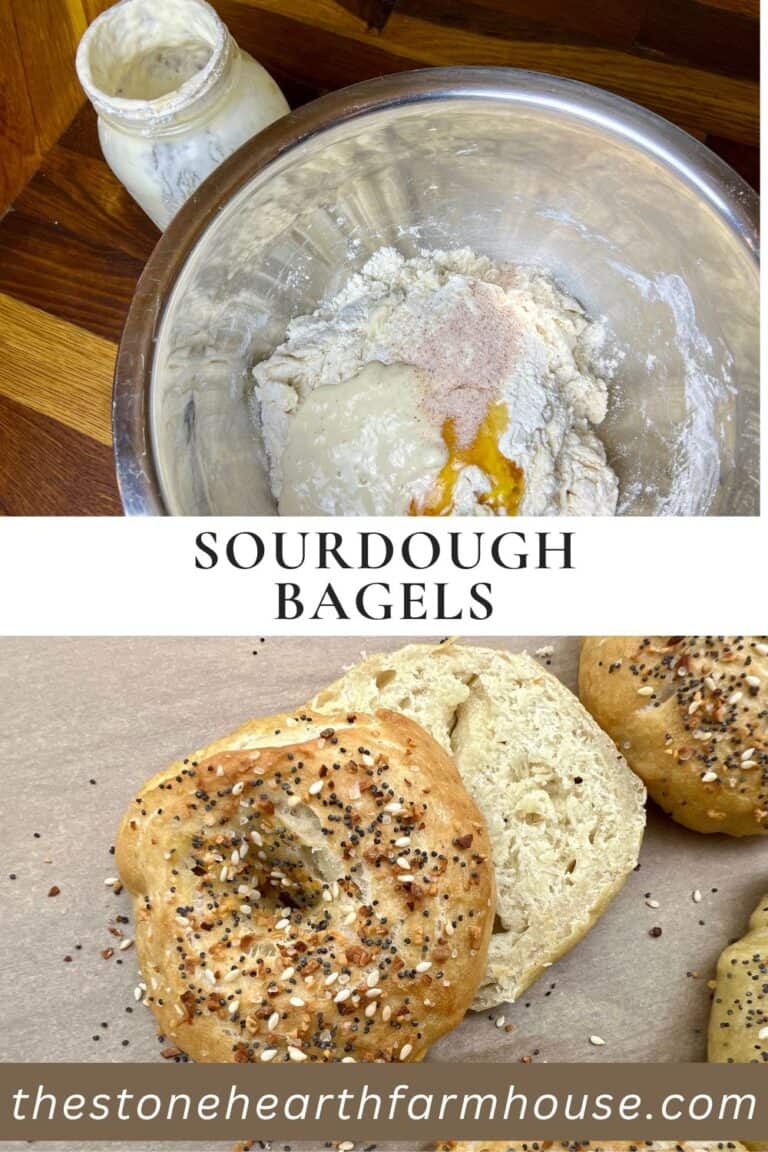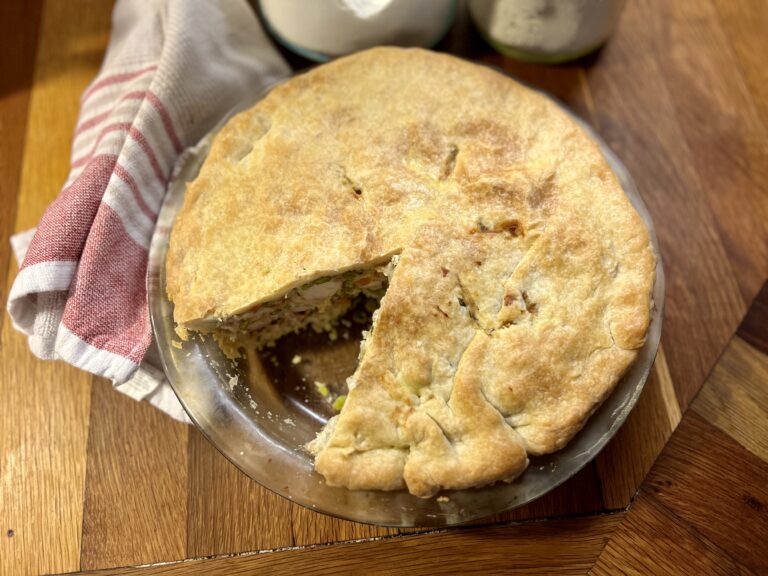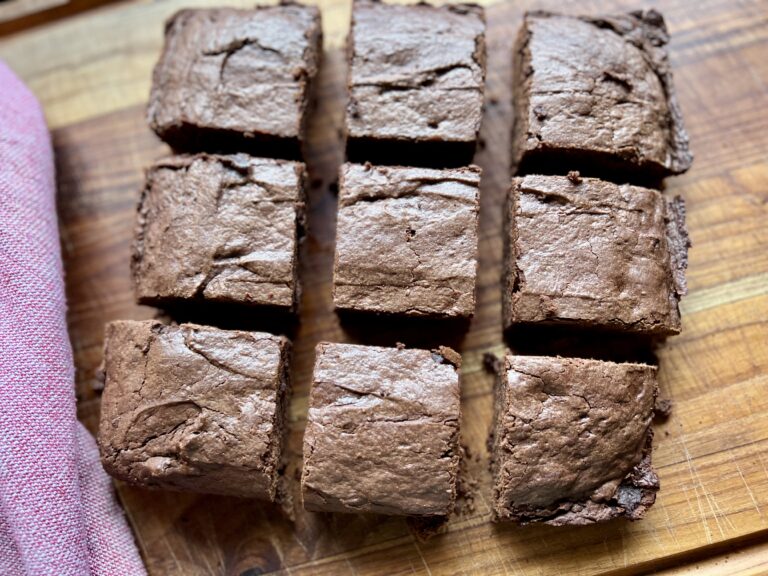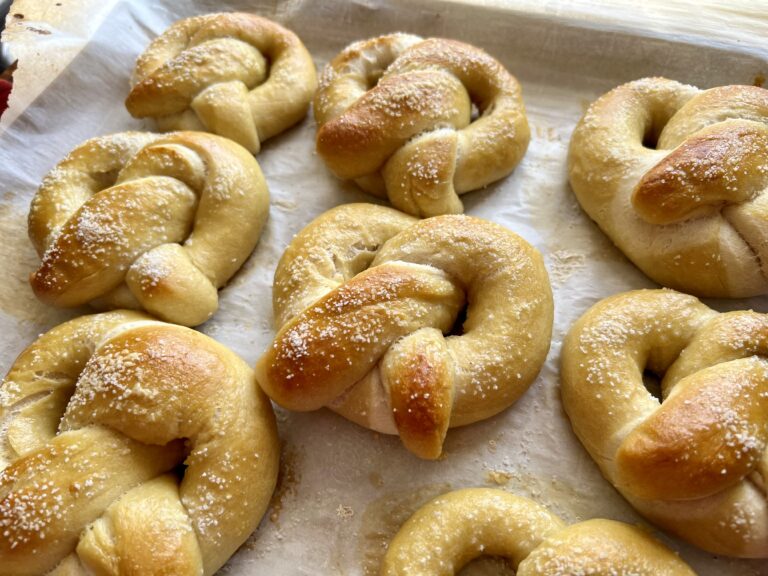Easy Beginner Sourdough Sandwich Bread Perfect Everyday Loaf
There’s nothing quite like pulling a fresh loaf of sourdough sandwich bread out of the oven! While crusty artisan-style loaves have their place, sometimes you just want a soft, tender crumb that holds together beautifully for sandwiches, toast, or grilled cheese. That’s where this sourdough sandwich bread comes in.
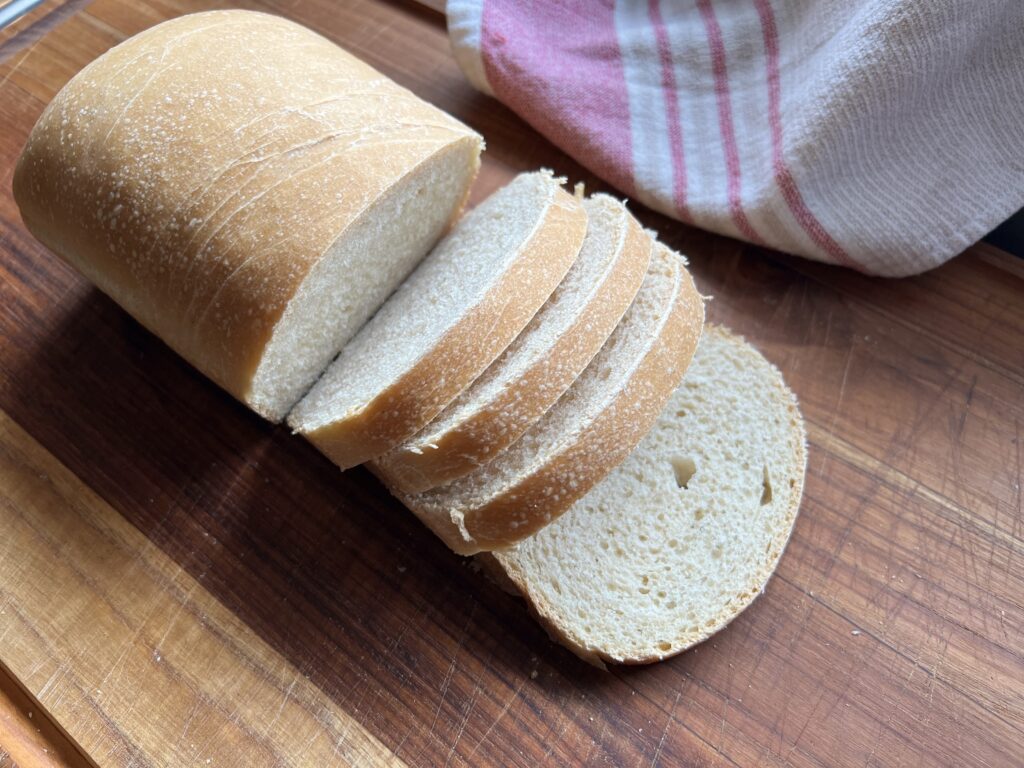
Made with a handful of simple ingredients, this recipe yields a reliable, fluffy loaf with the distinct flavor and health benefits of sourdough. Whether you’re just getting into sourdough or you’re a seasoned baker looking for a go-to sandwich loaf, this recipe is for you.
Why You’ll Love This Sourdough Sandwich Bread
- Soft and sliceable: Perfect texture for sandwiches, toast, or French toast.
- Naturally leavened: No commercial yeast—just your bubbly, active sourdough starter.
- Easy to make: Simple ingredients and an overnight rise do most of the work for you.
- Healthier than store-bought: With better digestibility and no additives.
Ingredients You’ll Need
- 4 cups (500g) all-purpose flour (I use King Arthur brand)
- 4 tablespoons (60g) butter
- 1 tablespoon honey or 12g sugar
- 2 teaspoons (9g) sea salt
- 1 cup + 2 tablespoons (270g) warm water
- 1/4 cup (50g) active sourdough starter (fed and bubbly)
Note: For accuracy, I recommend using a digital scale rather than measuring by volume. Especially with ingredients like flour and starter, volume can vary greatly depending on how packed the cup is or how bubbly the starter is.
Step-by-Step Instructions
1. Mix the Dough
In a large bowl, combine the flour, butter, sugar (or honey), and sea salt. Use your fingers to rub the butter into the flour mixture until it resembles breadcrumbs.
Add the sourdough starter and warm water. Mix until all the flour is fully absorbed. The dough will feel sticky at this stage—this is normal.
Cover the bowl with plastic wrap or a damp towel and let it rest for 30 minutes.
2. Knead the Dough
After resting, knead the dough until it becomes soft and elastic. You can do this by hand or in a stand mixer with a dough hook. If the dough sticks to your hands, lightly dust it with flour.
Tip: Don’t stress about kneading for a specific amount of time. Focus more on the texture, your dough should feel supple and stretchy.
3. Bulk Fermentation (Overnight Rise)
Leave the dough in the bowl, covered, and let it rise at room temperature for 8–12 hours, or until it has doubled in size. Warmer homes will see faster rise times, while cooler temperatures may require a full 12 hours.
4. Shape the Dough
Turn the risen dough out onto a lightly floured surface. Gently press it into a rectangle and release any large air bubbles.
Roll the dough into a log, tuck in the ends, and let it rest seam-side down for 5 minutes.
Butter an 8.5×4 inch loaf pan (or 9×5 if that’s what you have), then tighten the dough shape by pulling it toward you with floured hands. Place it into the pan, seam-side down.
5. Second Rise
Cover the pan and let the dough rise until it peaks just above the rim. This may take 2–4 hours depending on the temperature in your kitchen.
Helpful tip: If your home is cool, preheat your oven to the lowest setting, then turn it off. Place your covered loaf inside the warm oven to rise—but only for the second rise, not the overnight one!
6. Bake the Bread
Preheat your oven to 375°F (190°C). Bake for 45–50 minutes until the crust is golden brown and the loaf sounds hollow when tapped.
Allow the bread to cool in the pan for 5–10 minutes before removing it to a wire rack. Let it cool completely before slicing.
Storage Tips
- Room temperature: Store in a bread bag or wrapped in a tea towel for up to 3–4 days.
- Freezing: Slice the cooled loaf and freeze in a zip-top bag. Toast straight from frozen!
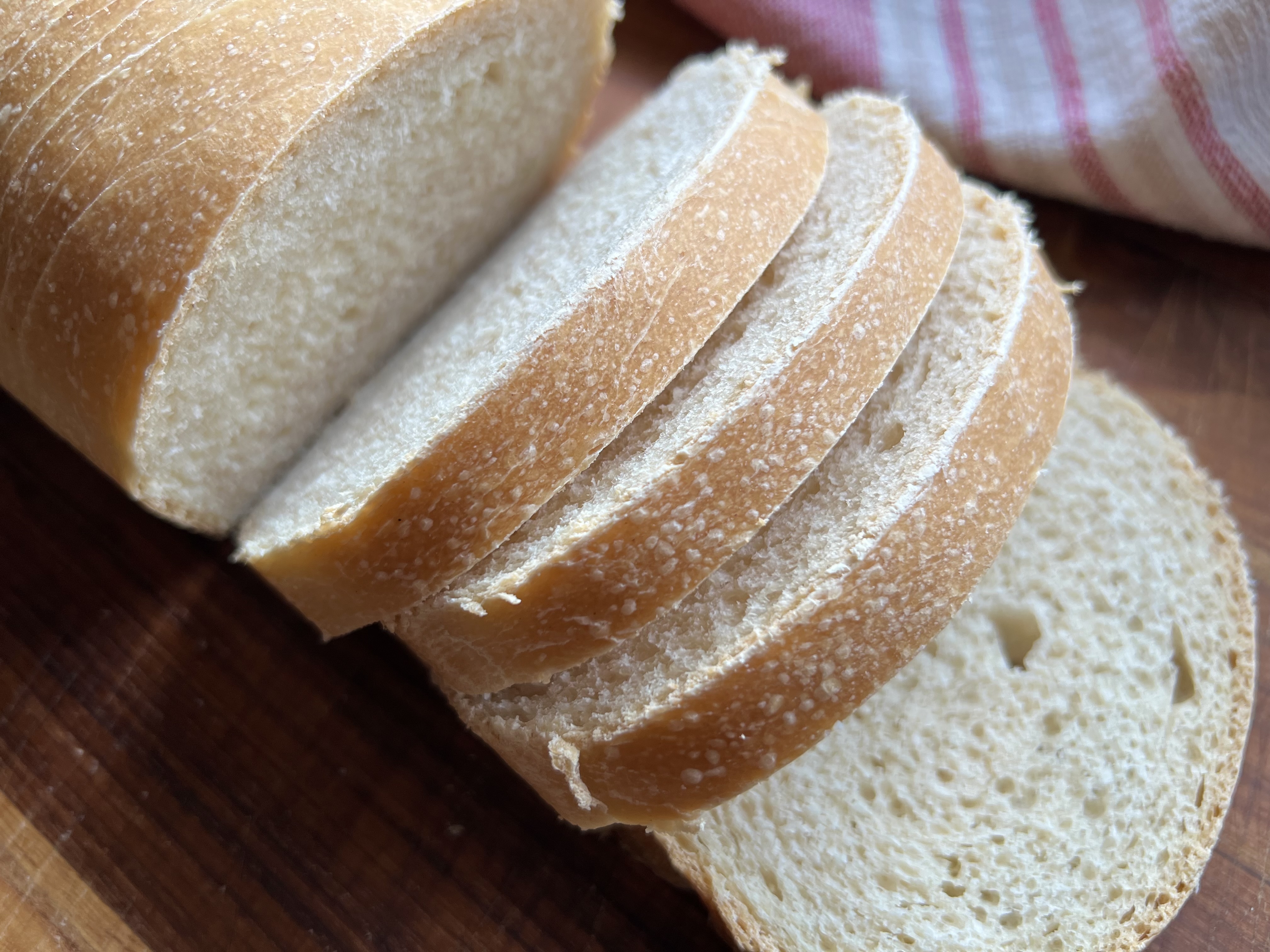
FAQs About Sourdough Sandwich Bread
What is the difference between sourdough bread and sourdough sandwich bread?
Great question! Traditional sourdough bread tends to be rustic and crusty, often baked in a Dutch oven with a chewy crust and an open crumb. Sourdough sandwich bread, on the other hand, is made to be soft, tender, and uniform in texture. It uses butter (or oil) to soften the crumb and is shaped in a loaf pan to give it that classic sandwich shape. It’s still 100% sourdough—just in a more family-friendly form!
Is sourdough bread ok for sandwiches?
Absolutely! In fact, sourdough makes some of the best sandwiches you’ll ever eat. Its subtle tanginess pairs beautifully with savory or sweet fillings. This sourdough sandwich bread, in particular, is soft enough to bite into without tearing your sandwich apart, but sturdy enough to hold everything together—even juicy fillings like tomatoes or pulled pork.
Is sourdough bread actually healthier?
Yes, sourdough bread has several health benefits compared to conventional yeast breads:
- Easier to digest: The long fermentation process breaks down gluten and phytic acid, making nutrients more bioavailable.
- Lower glycemic index: Sourdough can have a slower impact on blood sugar than other white breads.
- No commercial yeast or additives: When you bake at home, you control exactly what goes in—just flour, water, salt, and a little butter or oil.
How do you cut sourdough bread for sandwiches?
To get perfect sandwich slices:
- Let your loaf cool completely, at least 1–2 hours. Cutting hot bread will squish the crumb.
- Use a serrated bread knife and a gentle sawing motion.
- Cut with the loaf laying on its side if needed for more stability.
Sourdough Sandwich Bread Variations
Want to change things up? Try these delicious variations:
- Whole wheat version: Replace up to 50% of the all-purpose flour with whole wheat for a nuttier flavor and denser texture.
- Honey oat: Brush the top of the dough with honey and sprinkle oats on before baking.
- Garlic herb: Add dried herbs and roasted garlic to the dough during mixing for a savory twist.
Adjusting for Weather and Rise Time
Because sourdough is naturally leavened, rise times will vary depending on your environment. Here are a few helpful adjustments if your dough is slow to rise:
Cool weather adjustments:
- Use a smaller pan (8.5×4 inch) for a taller loaf.
- Increase the starter and reduce the water:
- 100g starter + 255g water
- or 150g starter + 250g water
Speed up the second rise:
- Use the oven-warming trick: heat your oven to the lowest setting, then turn it off and place the dough inside.
Final Thoughts
Sourdough sandwich bread is a staple in our home, and once you try this recipe, it just might become one in yours too. It’s nourishing, versatile, and hands-down better than anything you’ll find at the grocery store. With a little patience and practice, you will find yourself in a routine of making beautiful and soft loaves week after week.
Happy baking, and may your sandwiches always be made with homemade sourdough!
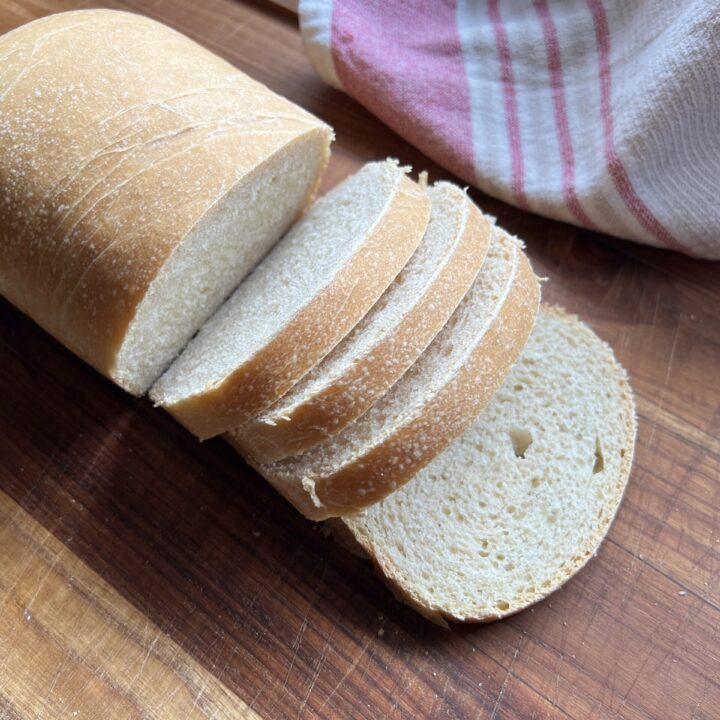
Sourdough Sandwich Bread
This soft and fluffy sourdough sandwich bread is the perfect recipe for beginners and seasoned bakers alike. Made with a few simple ingredients, it’s naturally leavened for a mild tangy flavor and a tender crumb. Ideal for sandwiches, toast, or as a side to your favorite meals, this homemade bread will quickly become a staple in your kitchen!
Ingredients
- 4 cups (500g) all purpose flour
- 4 tbsp (60g) butter
- 1 tbsp honey or 12 g sugar
- 2 tsp (9g) sea salt
- 1 cup + 2 tbsp (270g) warm water
- 1/4 cup 50g active sourdough starter (fed and bubbly)
Instructions
Mix the dough
- In a large bowl mix the flour, butter, sugar and salt
- Mix until combined and the butter looks like breadcumbs
- Add active starter and warm water to the mixture
- Mix until the flour is fully adsorbed, the dough will feel sticky at this stage
- Cover the bowl with plastic wrap and let it sit for 30 minutes
- After resting, begin to knead the dough, the dough should not stick to your hands, if it does add a dusting of flour
- Note: I make this recipe by hand but you can use a stand mixer with a dough hook to knead the dough. If kneading by hand, relax into it and focus more on texture of the dough than the amount of time spent. You want the dough to be soft and elastic.
Bulk Rise
- Keep dough in the mixing bowl and cover with plastic wrap and let it rise overnight for 12 hours or until it doubles in size
Shape Dough
- Next remove the dough onto a lightly floured surface
- Flatten the dough into a rectangle and release any air bubbles`
- Roll the dough into a log and tuck in the ends
- Let rest for 5 minutes
- While waiting butter your loaf pan
- With floured hands pull the dough toward you to tighten its shape then place in the loaf pan
Second Rise
- Cover the dough
- Let rest at room temperature until it has risen a little above the rim of the baking pan. This can take a couple hours depending on the temperature of your home.
Bake
- Bake at 375 F for 45-50 minutes
Notes
I recommend using a scale to weigh your ingredients instead of cups.
Why? you may ask. Weight and volume measurements are not identical; they are merely approximate! This is crucial, especially for the sourdough starter. If your starter is very bubbly, 1/4 cup might only weigh 30g, which is insufficient for this recipe (you need 50g). The dough will take a very long time to rise! The same applies to the flour—4 cups might weigh significantly more than 500g depending on how tightly packed the flour is.
I used King Arthur all-purpose flour for this recipe.
**Helpful Tips:**
If the weather is cool, the second rise might take longer than expected. To expedite the rise, use an 8.5×4 inch loaf pan (instead of a 9×5 inch pan), increase the amount of starter, and decrease the amount of water. Choose one of the following adjustments while keeping the other ingredient quantities the same:- 100g starter + 255g water- 150g starter + 250g water
Additionally, since temperature affects rise time, you can increase the surrounding temperature for the bulk or second rise as needed. Preheat your oven to 75-80°F, then turn it off immediately. Place the dough inside until it rises. Do not use this method overnight as it will be too warm, this is only for the second rise.
Nutrition Information:
Yield: 12 Serving Size: 1Amount Per Serving: Calories: 168Total Fat: 0gSaturated Fat: 0gTrans Fat: 0gUnsaturated Fat: 0gCholesterol: 0mgSodium: 100mgCarbohydrates: 36gFiber: 1gSugar: 3gProtein: 5g
Nutrition information is automatically calculated, so should only be used as an approximation.
